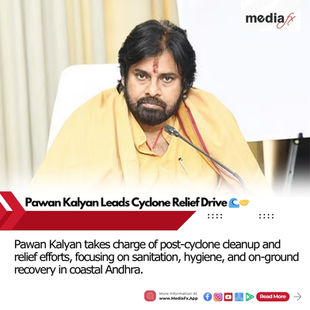Nepal’s Gen Z Shook the Govt – But What’s Next?
- MediaFx

- Sep 10
- 2 min read
TL;DRNepal’s Gen Z forced Prime Minister Oli to resign after weeks of massive protests. But this is just the beginning. The country now faces a crossroads: fresh elections, an interim government, or a return of the same corrupt elites. Youth icon Balen Shah is emerging as the big hope for change.

The Political Fallout
Prime Minister Oli and his cabinet resigned after non-stop Gen Z protests shook the nation. Youth power literally toppled the government, proving that ordinary people can stand up to political elites. But uncertainty looms. According to the constitution, the next PM must have parliamentary support, or else Nepal heads for fresh elections.
Some voices are calling for an interim government to carry out reforms and prepare for polls within six months. But here’s the hitch: the constitution has no clear space for such an arrangement, creating a political puzzle.
Army on the Streets
With protests turning violent—government buildings set ablaze, nearly 20 deaths reported, and chaos in the capital—the Nepal Army stepped in. Curfews were imposed, and the military tried opening dialogue with protestors.
But there’s no single leader to talk to. The movement is decentralized, meaning it’s run by ordinary people themselves. That makes it harder to control but also shows the deep public anger against the system.
From App Ban to Revolution
It all began when the government banned popular apps like WhatsApp, YouTube and X. What was meant to silence youth instead sparked a fire. Gen Z turned the ban into a symbol of oppression and demanded broader accountability.
Protesters openly called out the privileged lifestyles of “nepo kids” of political families while ordinary people struggled. They even used anime-inspired flags from One Piece as symbols of rebellion. Pop culture became protest culture.
The Rise of Balen Shah
One man who has captured the imagination of youth is Balen Shah, the 34-year-old mayor of Kathmandu. An engineer, rapper, and outspoken anti-corruption figure, Shah has built an image of honesty and strength.
For many young Nepalis, he represents what politics could be—transparent, people-oriented, and free of elite privilege. “Why not Balen for PM?” has become a rallying cry.
What Comes Next?
Interim Govt vs Fresh Elections – Nepal could see either a temporary reformist government or immediate elections.
Constitutional Reforms – Youth demand deeper changes: limiting elite privilege, protecting digital freedoms, and ensuring accountability.
Youth-Driven Politics – Figures like Balen Shah could transform Nepalese politics if momentum continues.
Sustained Protest Pressure – Gen Z isn’t ready to go home until real change arrives.
MediaFx People’s Take
Nepal’s youth have proved that when ordinary people unite, even the strongest governments can fall. But resignations alone don’t bring equality. The challenge is to prevent another set of elites from hijacking power and to build a system where working-class people truly benefit.
This is not just Nepal’s story—it’s a lesson for all of South Asia. Change comes when the people rise together.













































